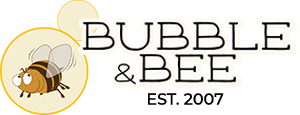Organic Labeling Lies
Organic Labeling Lies:
Conversations with a Chemist on the Inside
In developing my products, I consulted with a chemist friend of mine who works at a cosmetic chemical company. In my quest to develop a natural conditioner I had come accross an ingredient on a reputable organic product's label and wanted to find it to try it out. The ingredient I was searching for was called "coconut fatty acid cream base." I e-mailed my friend to ask him if his company carried it. He came back with a reply that the chemical, in fact, did not exist. Here's what he said:
"The fact is, any store you walk into, from 99 cent to Sephora, about 80% of the products are mislabeled. It's probably higher in Sephora than the discount place because alot of it there is deliberate. What you're citing is a good example. They didn't screw up and put "Coconut Fatty Acid C ream Base" but it is grossly innapropriate and not legally labeled. The most important thing, though, is that the ingredients must be listed using the proper nomenclature according to the regulations of the country of sale. In the US, that means INCI (Index of Nomenclature for Cosmetic Ingredients). There is no ingredient with the INCI name "Coconut Fatty Alcohols" or anything even close […] Their whole label is very suspect. If you send it to me, I can point out all of the mistakes; both innocent and blatant.
Illegally labeled products. Hidden chemicals. I looked at some more products that this company had made. Their shampoo had listed as the second ingredient: "coconut oil-corn oil soap." I knew this was impossible; there's no way there could truly be a soap in a shampoo. And believe me, I had tried. A true soap is made by taking oils and adding lye to saponify the oils. A true liquid soap (commonly known as a castile soap) is, by nature, alkaline. A shampoo needs to be acidic in order to keep the hair's pH in balance and healthy. I tested the shampoo's pH. Sure enough, it was acidic. So, if this was truly a soap, how did it get acidic? Maybe they added citric acid or vitamin C to change the pH? Impossible. When you add an acid to a true liquid soap the soap hardens and clumps. There was no way this shampoo contained a "coconut oil-corn oil soap." More likely there were using a synthetic detergent supposedly derived from coconut and corn oils. On the label, though, "coconut oil-corn oil soap" sounds much more natural than the chemical it really is. I told my chemist friend about the second illegally labeled product this company was selling.
"Honestly, many of the companies throwing in on the "all natural" frenzy are some of the most disreputible groups I've seen in the industry. They prey upon the limited knowledge and lemming-like acceptance of propaganda of the masses."
After some more searching, I finally found a chemical similar to the first one I was looking for. The chemical supplier called it "conditioner cream base." It contained ceteryl alcohol, and ceteareth-20, a toxic chemical that’s deemed unsafe for use in cosmetics, and a penetration enhancer--—meaning that it seeps into the skin and brings other chemicals with it. So, does Coconut Fatty Acid Cream Base (used by one of the major “organic” personal care products) have ceteareth-20? The problem is, we don’t know. My chemist friend gave me some advice.
I will always suggest that you also follow the rules, but the sad truth is that you probably would get away with the same deceit, and it’s tough to compete when you're the only honest player. That's why I stay on my side of the bench. There's no fame or fortune, but I still like myself.
It is tough to compete when the playing field isn't even. That's why, at Bubble and Bee, we play a different game!
